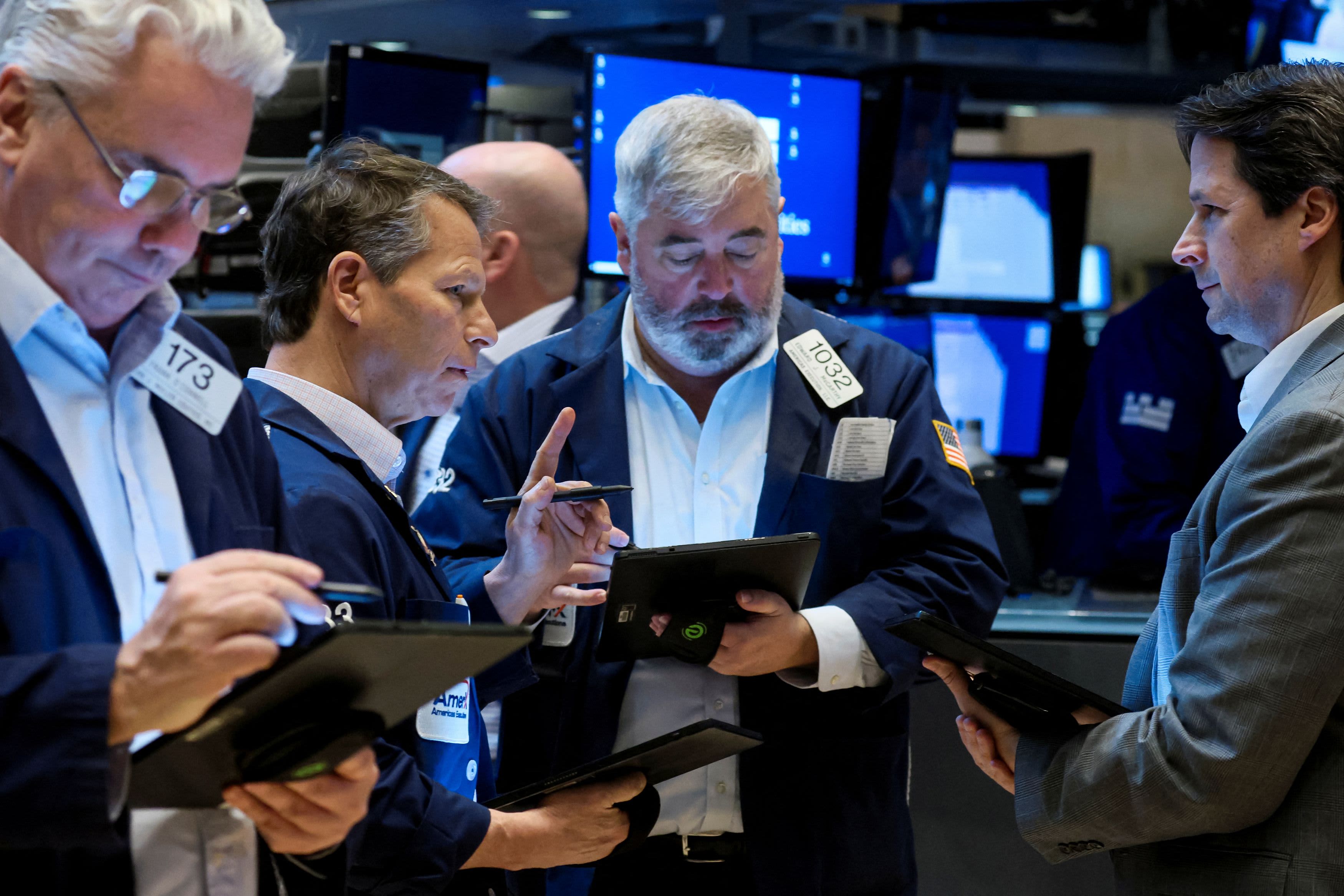Dow falls 200 points with oil on the rise again, Russia-Ukraine talks falter

Stocks fell Thursday as peace talks between Ukraine and Russia showed little progress on key issues and oil prices again moved higher.
The Dow Jones Industrial Average dipped about 200 points, or 0.8%. The S&P 500 shed 0.7%. The technology-focused Nasdaq Composite was 1.2% lower, dragged down by losses in Apple and Meta Platforms.
Negotiations between Russian and Ukrainian foreign ministers ended with little progress on matters including a cease-fire or a safe passage for civilians trying to flee the besieged city of Mariupol.
Loading chart…
Markets have been tied closely to the conflict and have been inversely correlated with energy prices, which have been on a tear higher during the Russia-Ukraine war. A day after West Texas Intermediate crude tumbled more than 12%, the U.S. benchmark climbed about 4% to around $112. Brent crude oil, which tumbled 13% on Wednesday, rose nearly 5% on Thursday to near $116.
Energy stocks Chevron and Exxon Mobil rose 2.3% and 1.2%, respectively.
Other commodities that have seen significant rallies since the war in Ukraine, that pulled back Wednesday, where higher again on Thursday. Silver, palladium and wheat rose. Investors have been worried about the impact of high prices on economic growth.
Elsewhere in markets, Amazon shares jumped 4% after the company announced a 20-for-1 stock split and $10 billion buyback. CrowdStrike rallied 9% following an earnings beat and raising its outlook.
Goldman Sachs ticked 2% lower after announcing it is shuttering its Russia business, becoming one of the first major global investment banks to do so after the country invaded its neighbor Ukraine last month.
The consumer price index, a key inflation gauge, showed a wide-ranging basket of goods and services increased 7.9% in February, a fresh 40-year high. This was a touch higher than the estimate of 7.8% for the year, according to economists surveyed by Dow Jones.
On a month-over-month basis, the CPI gain was 0.8%, compared to the estimate of 0.7% for the month.
“The inflation situation is getting worse, not better. Household staples are becoming more and more expensive, crowding out spending on discretionary categories and delaying the spending reallocation back to services. And while gas prices explain much of the story, food and housing prices were also key drivers in February,” said John Leer, Morning Consult’s chief economist.
“Unfortunately the war in Ukraine will make it more difficult to get inflation under control. Gas and energy prices continue to rise, wheat prices are through the roof and supply chains remain in chaos,” Leer added.
Traders also weighed the European Central Bank’s decision to unwind stimulus measures sooner than expected. The bank said Thursday it will end its bond-buying program in the third quarter of this year, if the economic data allows for it.
The ECB’s decision comes ahead of next week’s Federal Reserve meeting where the central bank is expected to raise rates.
Wall Street was coming off a strong session, which saw the S&P 500 notch its biggest one-day jump since June 2020. The Nasdaq Composite experienced its best day since November 2020.
“It is somewhat typical of a high volatility environment where you can get just wicked swings in both directions,” said Liz Ann Sonders, Charles Schwab chief investment strategist. “A relief rally is probably the best way to describe what happened in the markets. … It doesn’t surprise me to see a very sharp countertrend move.”




